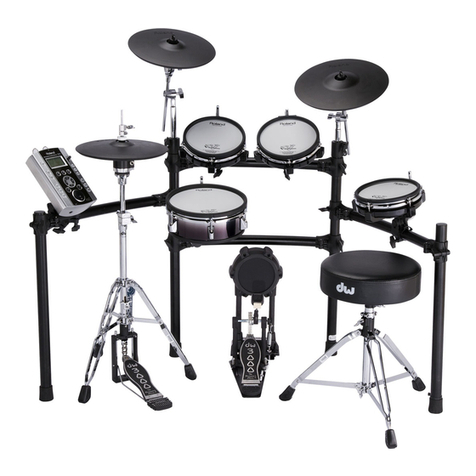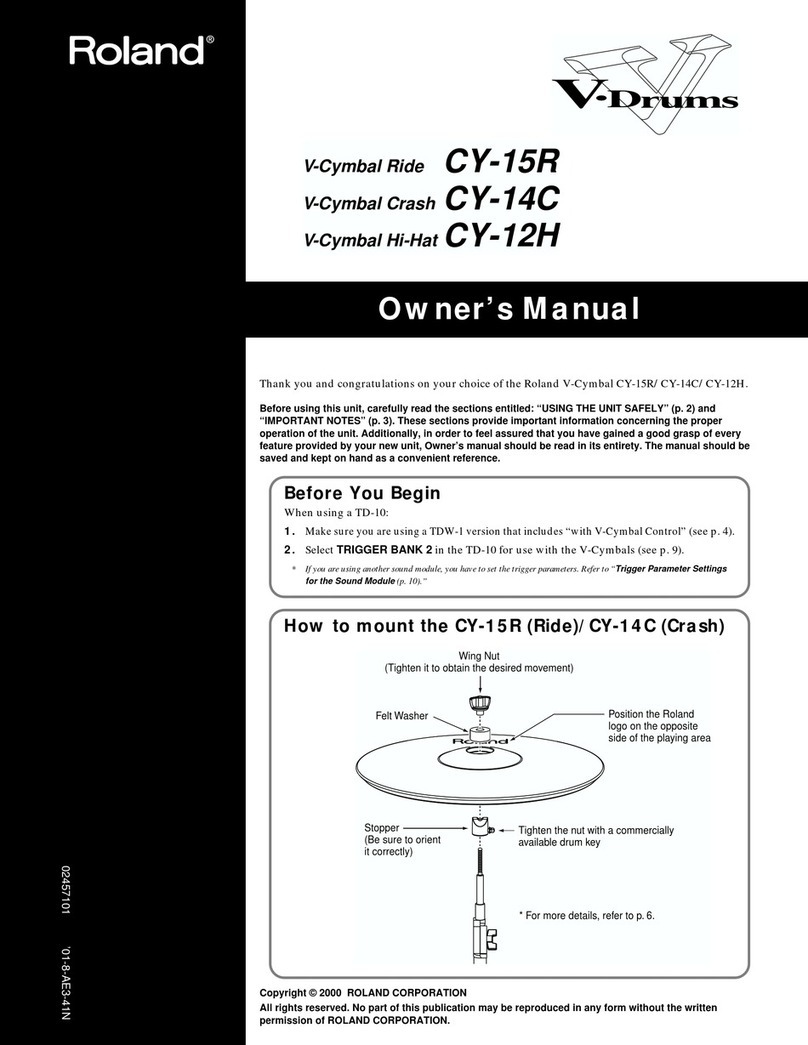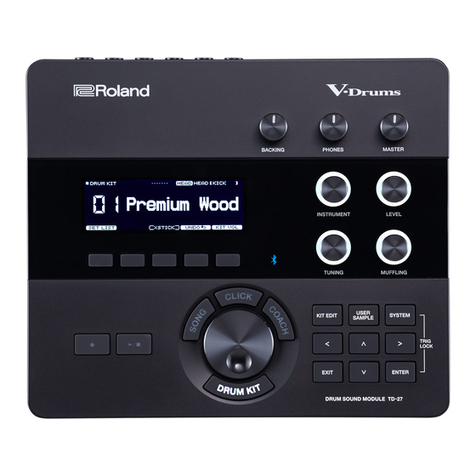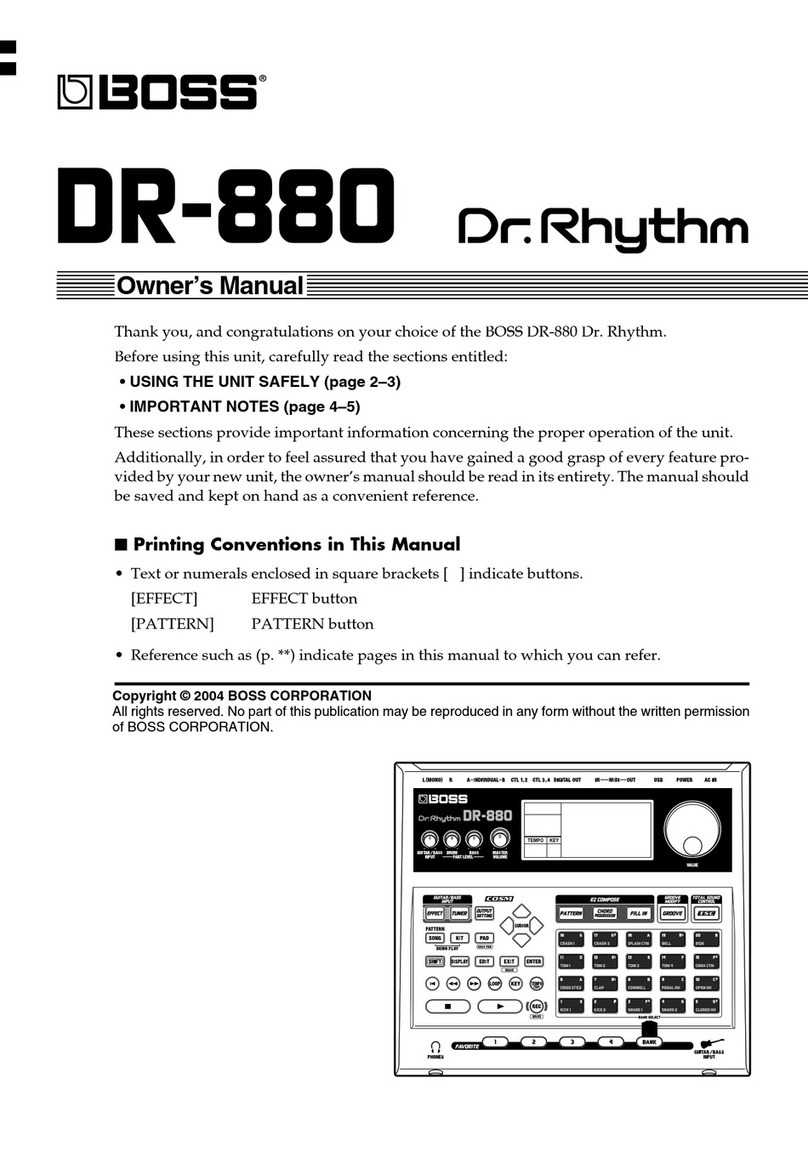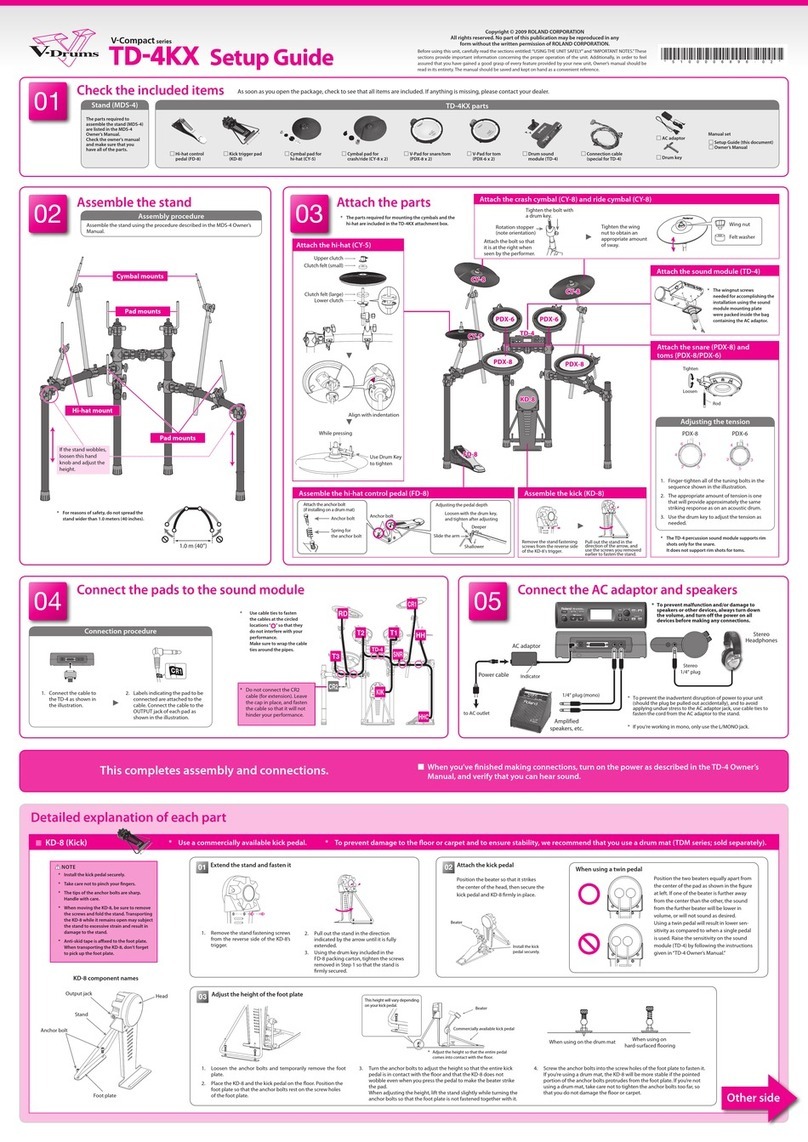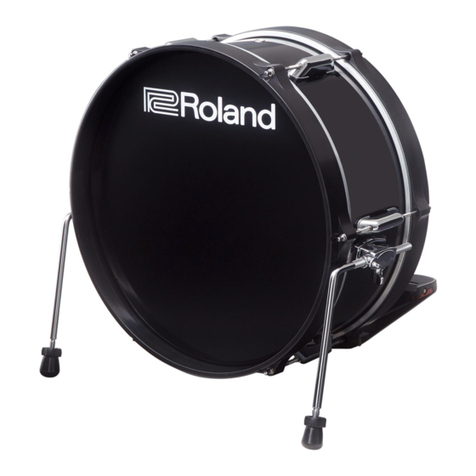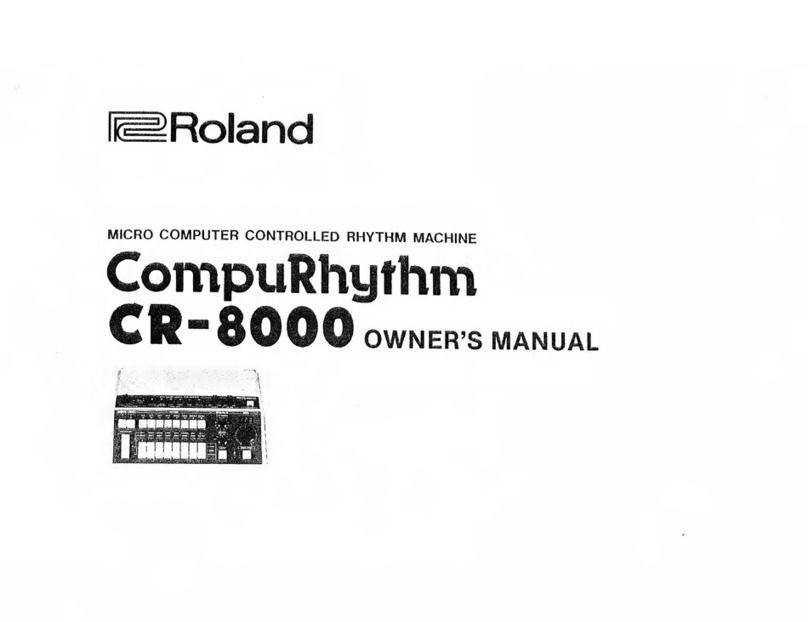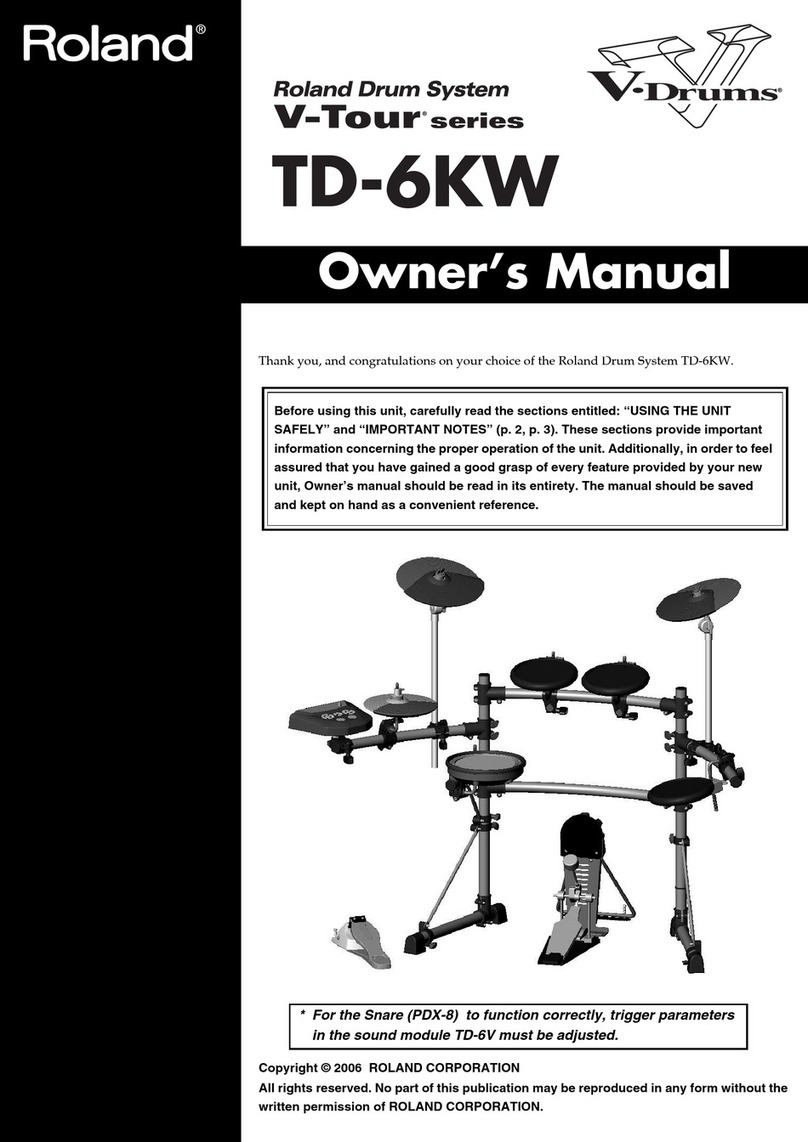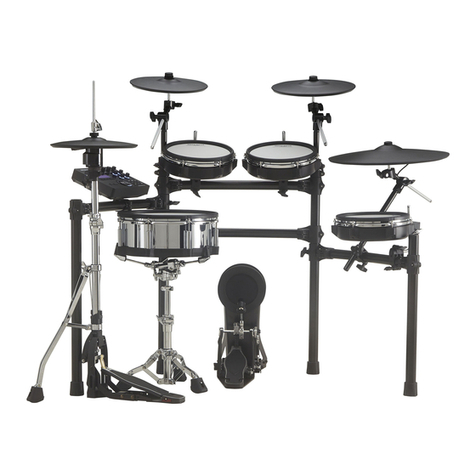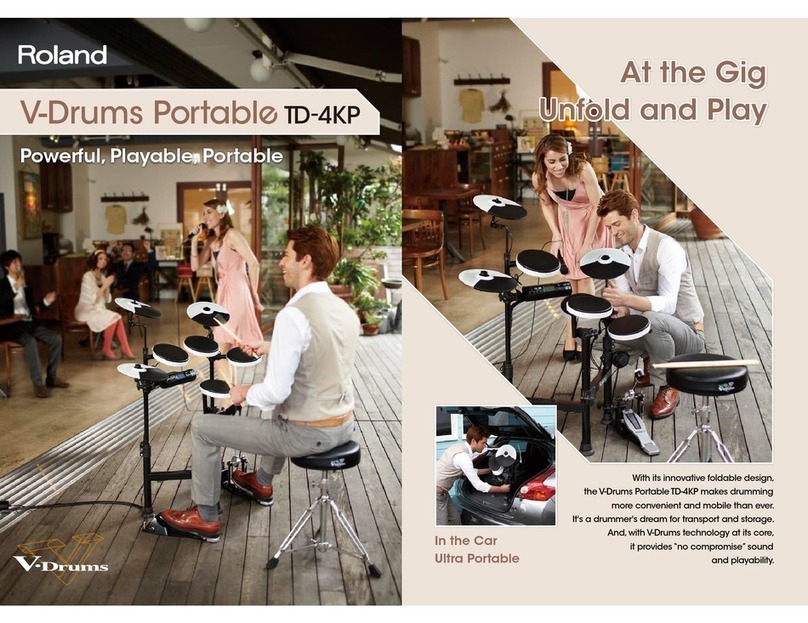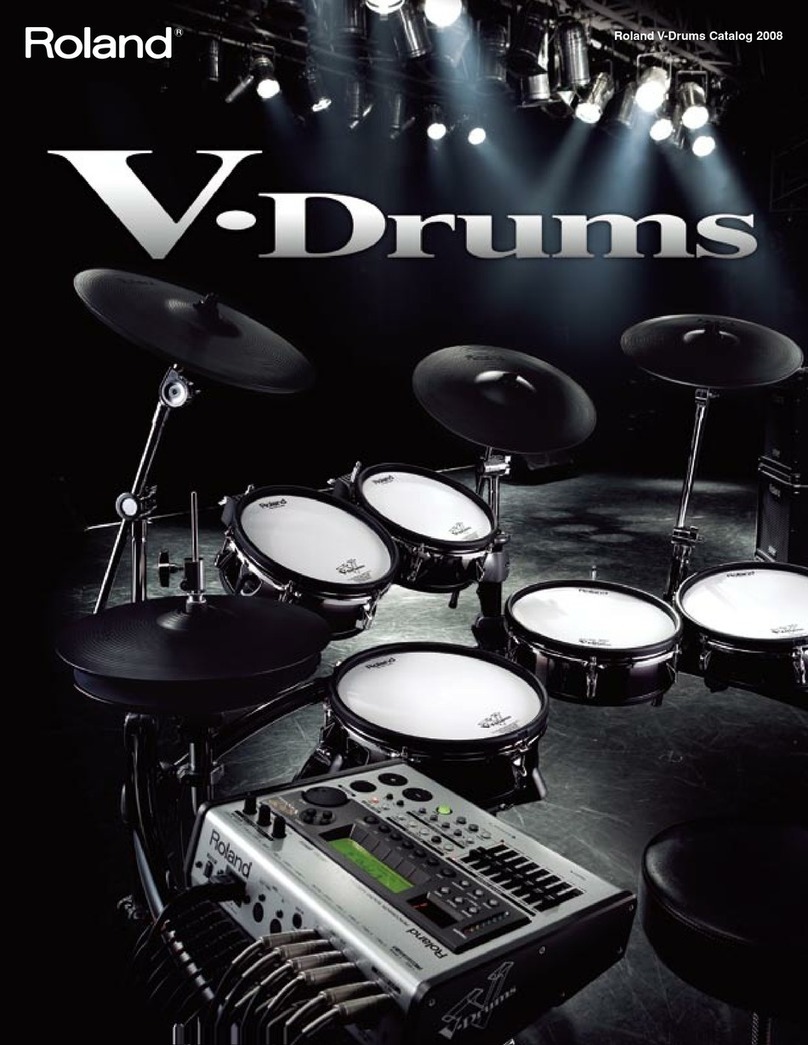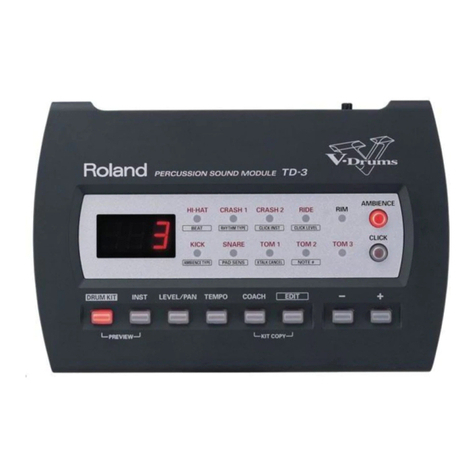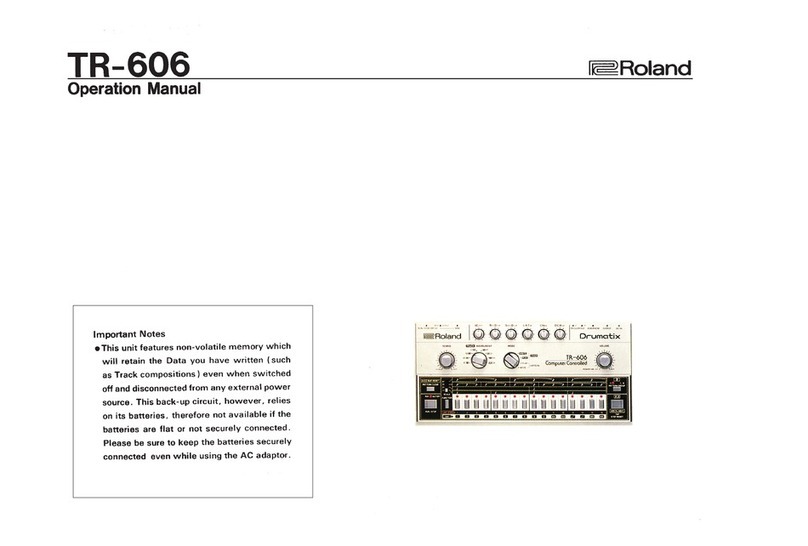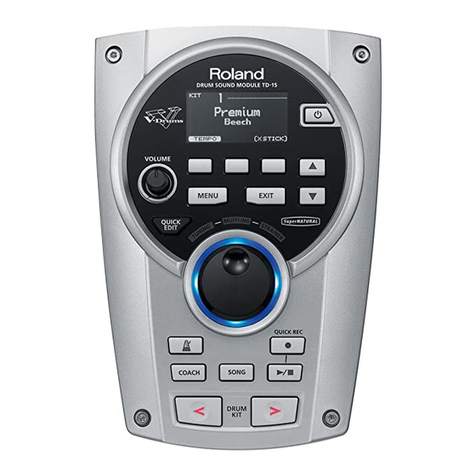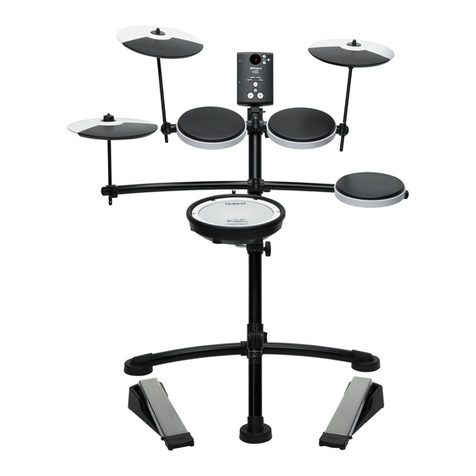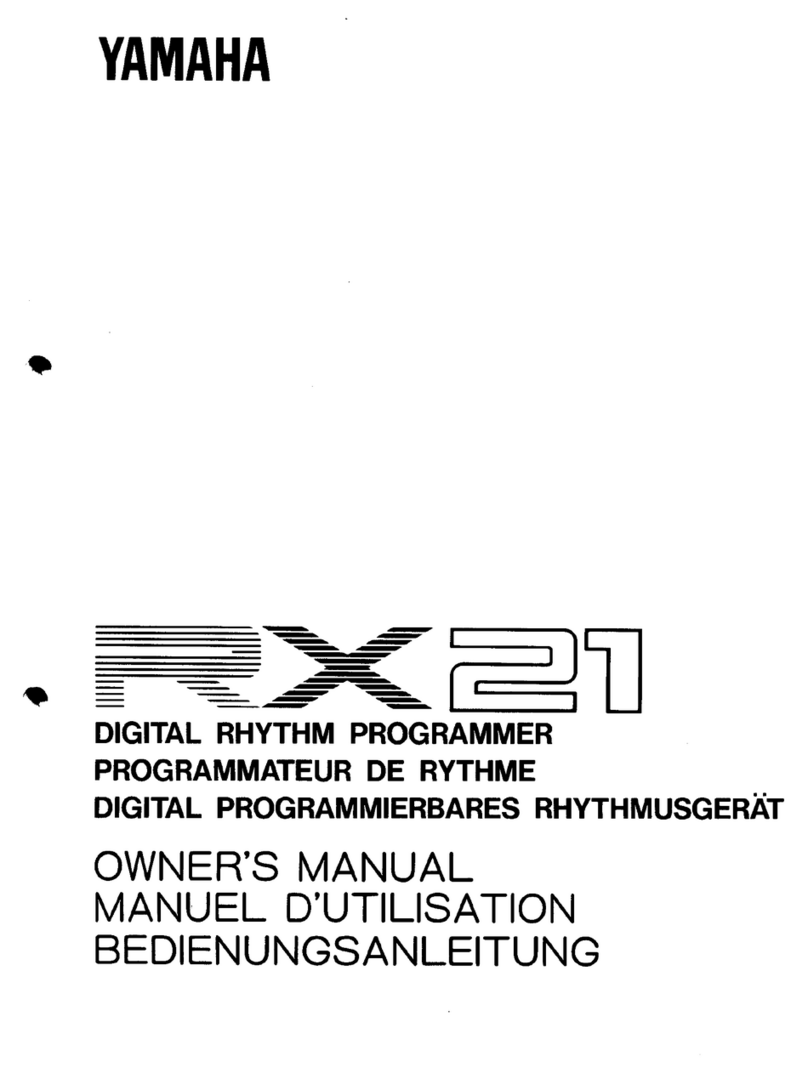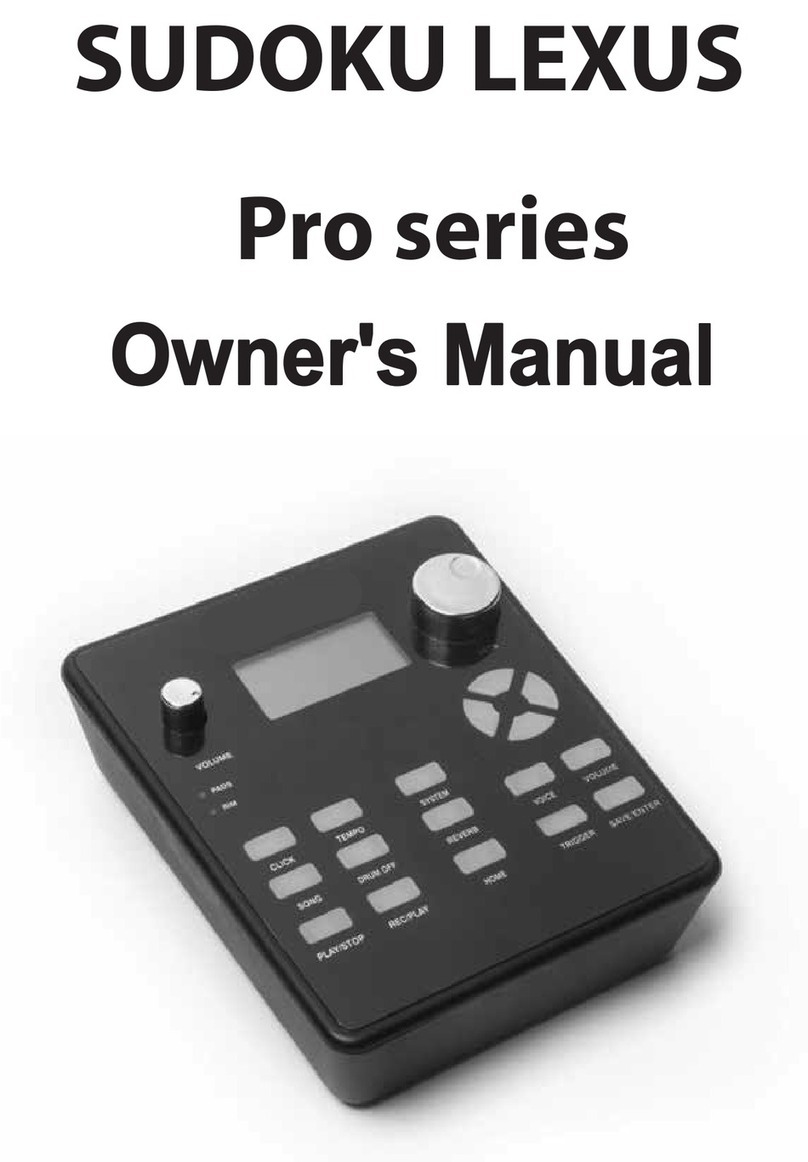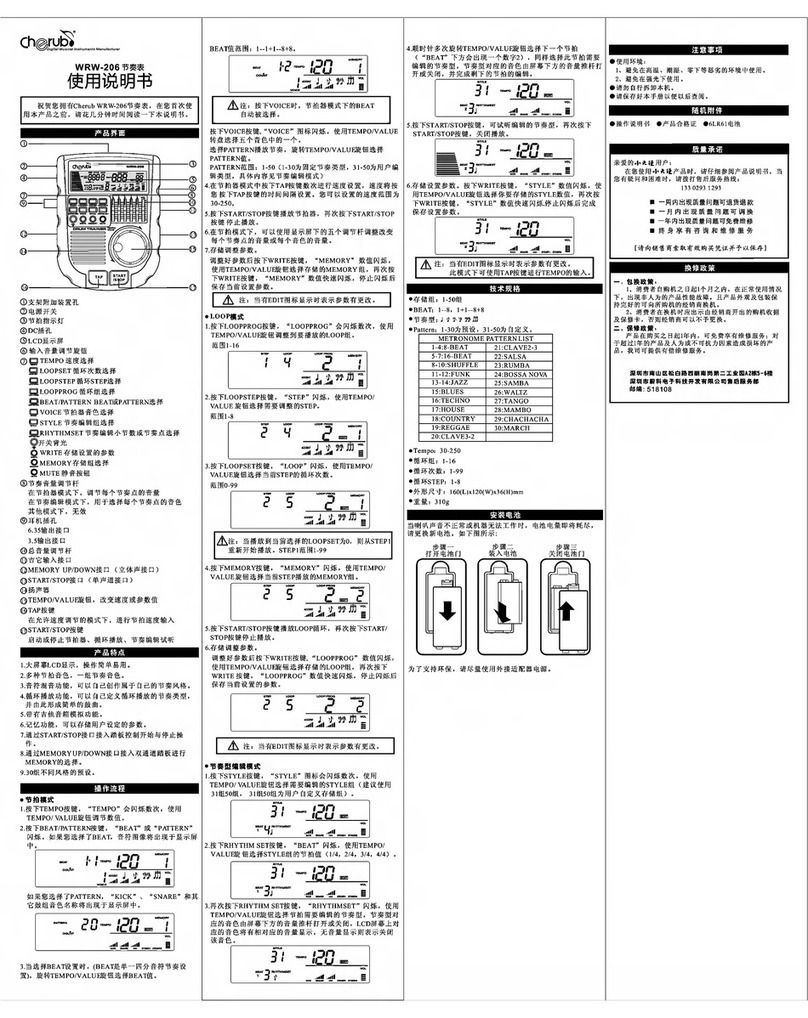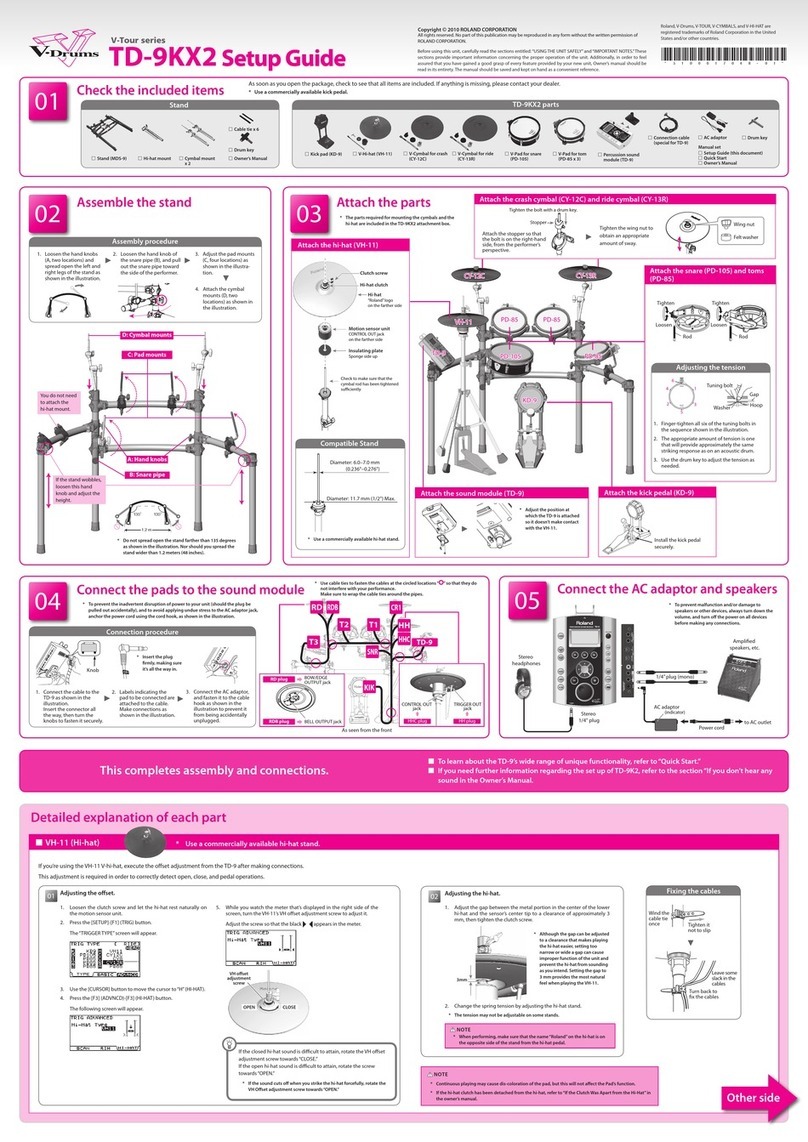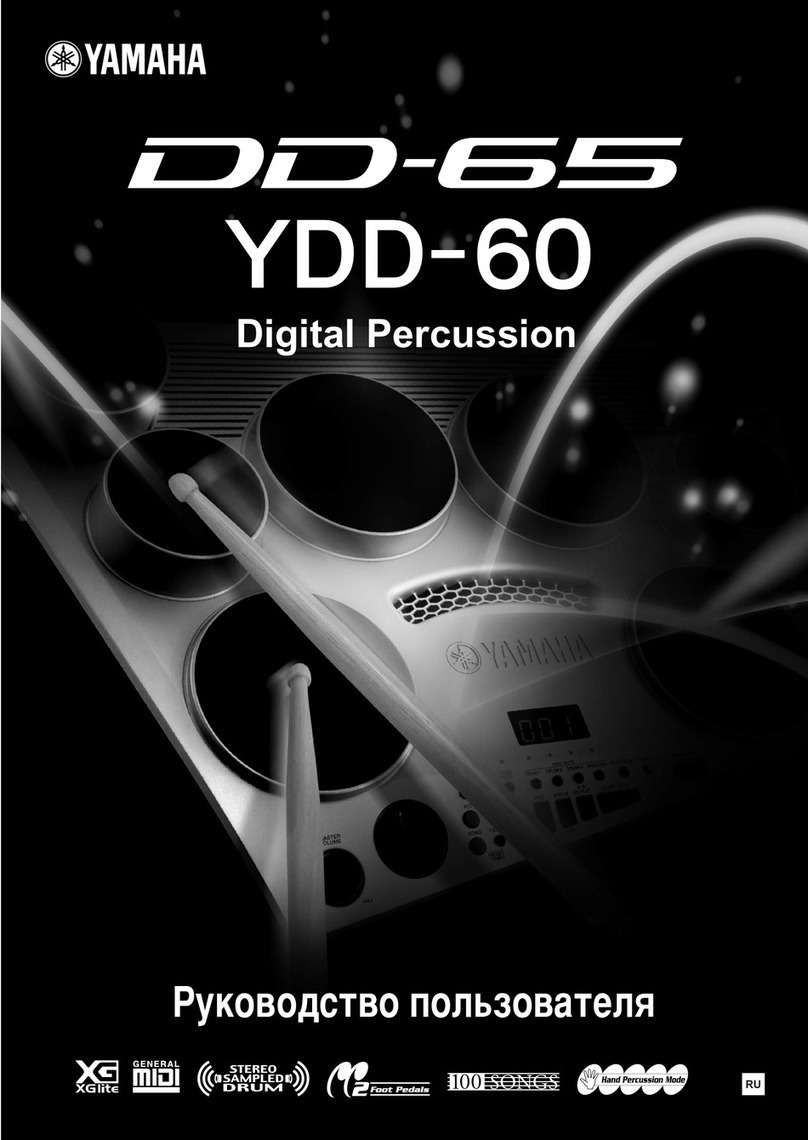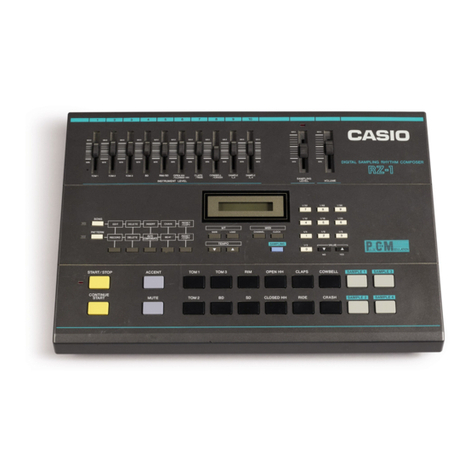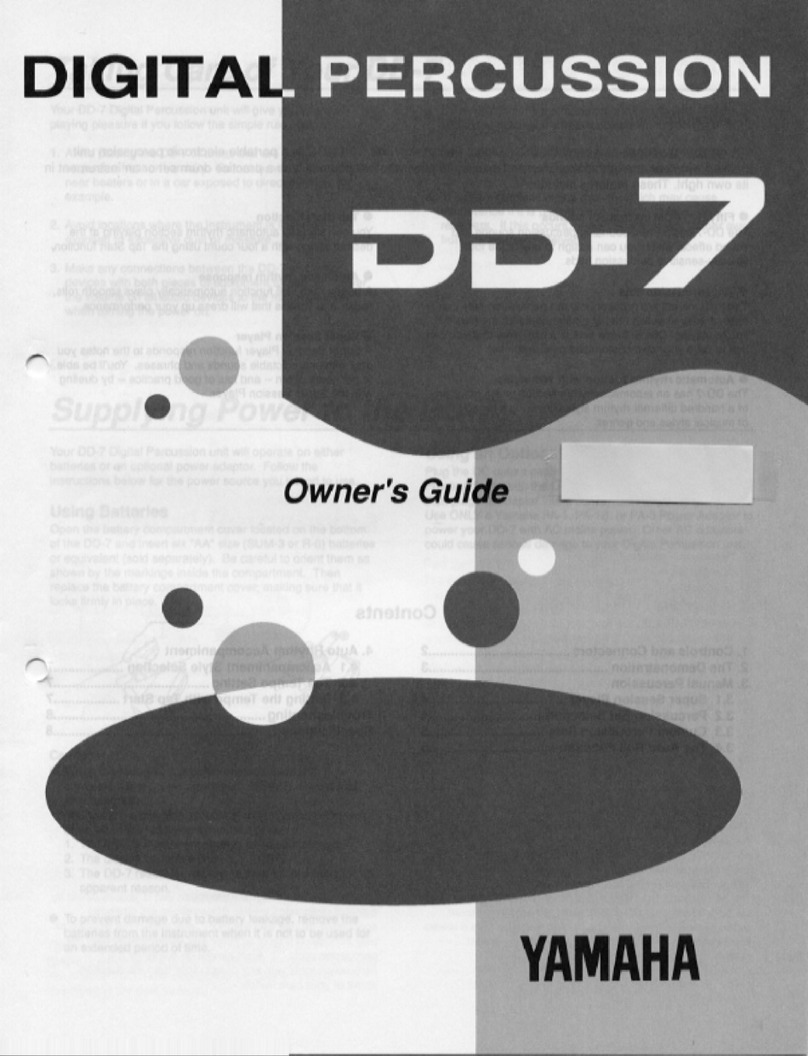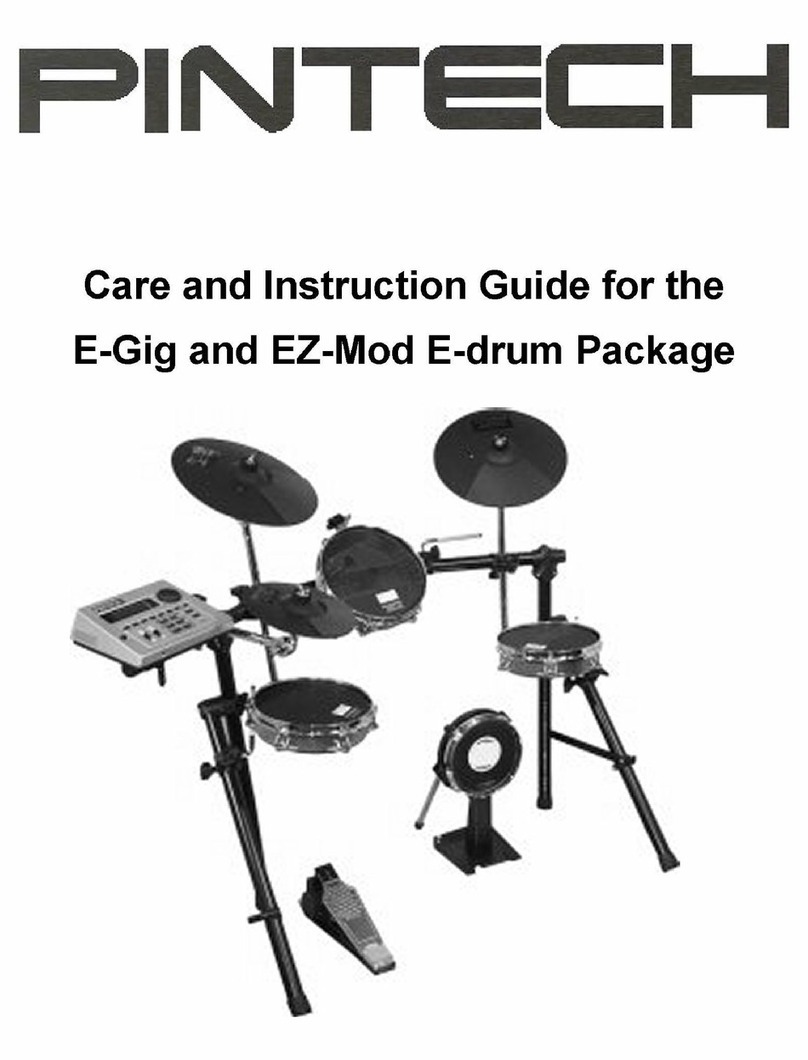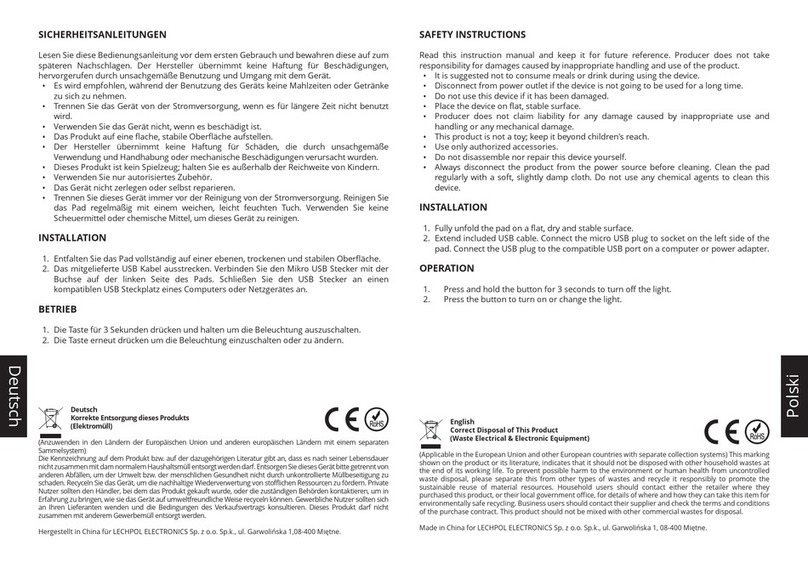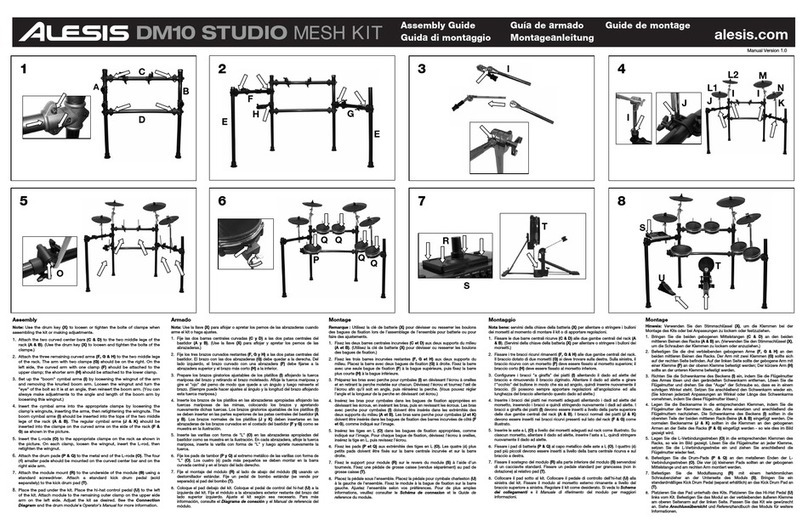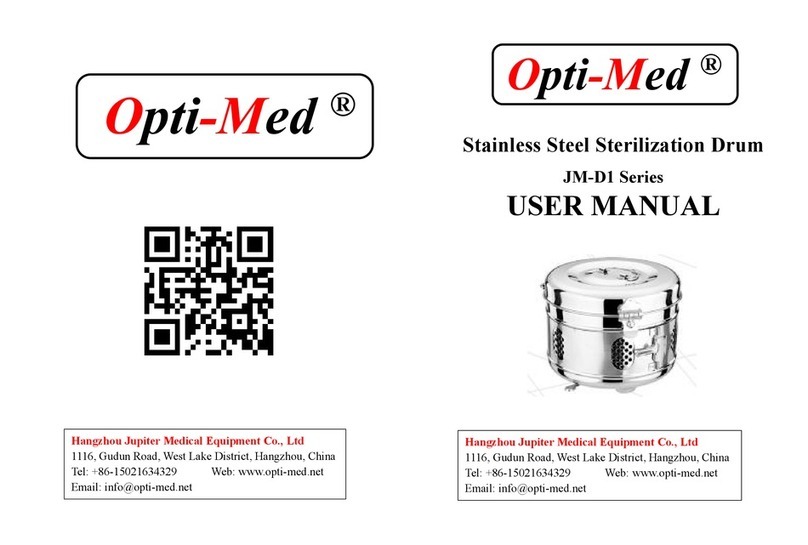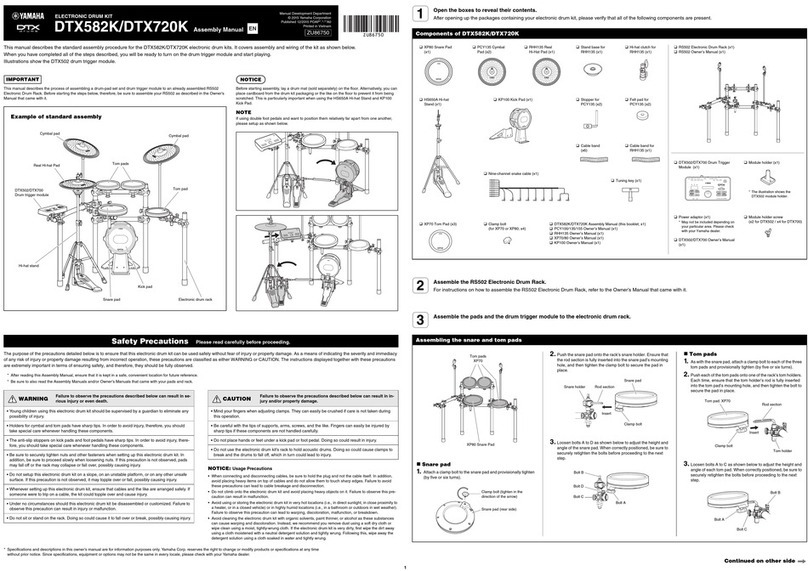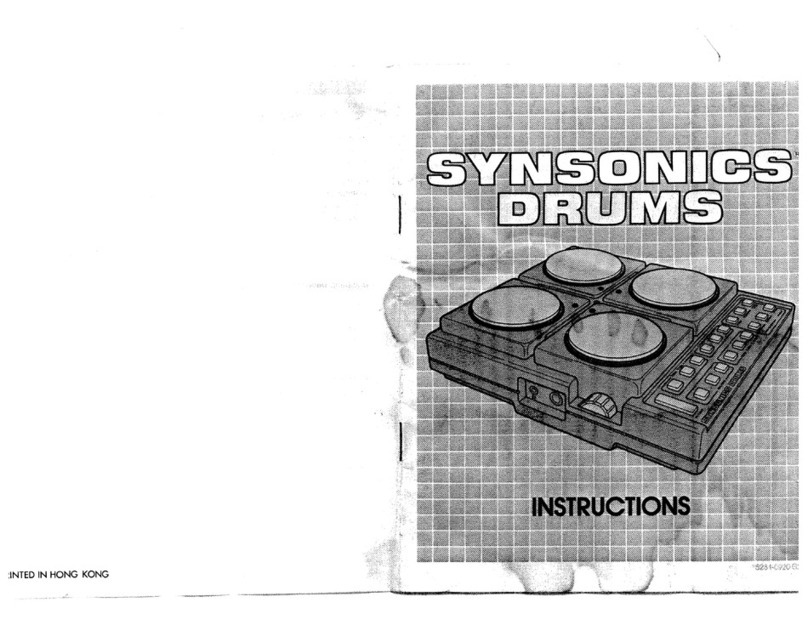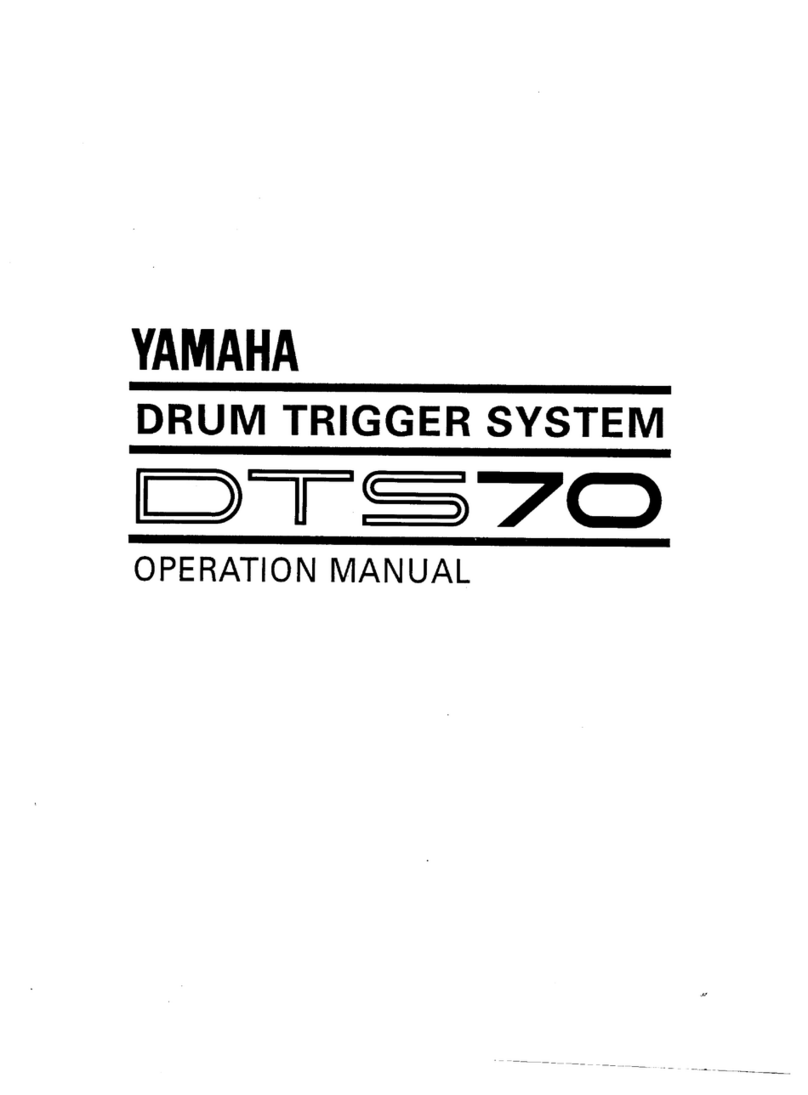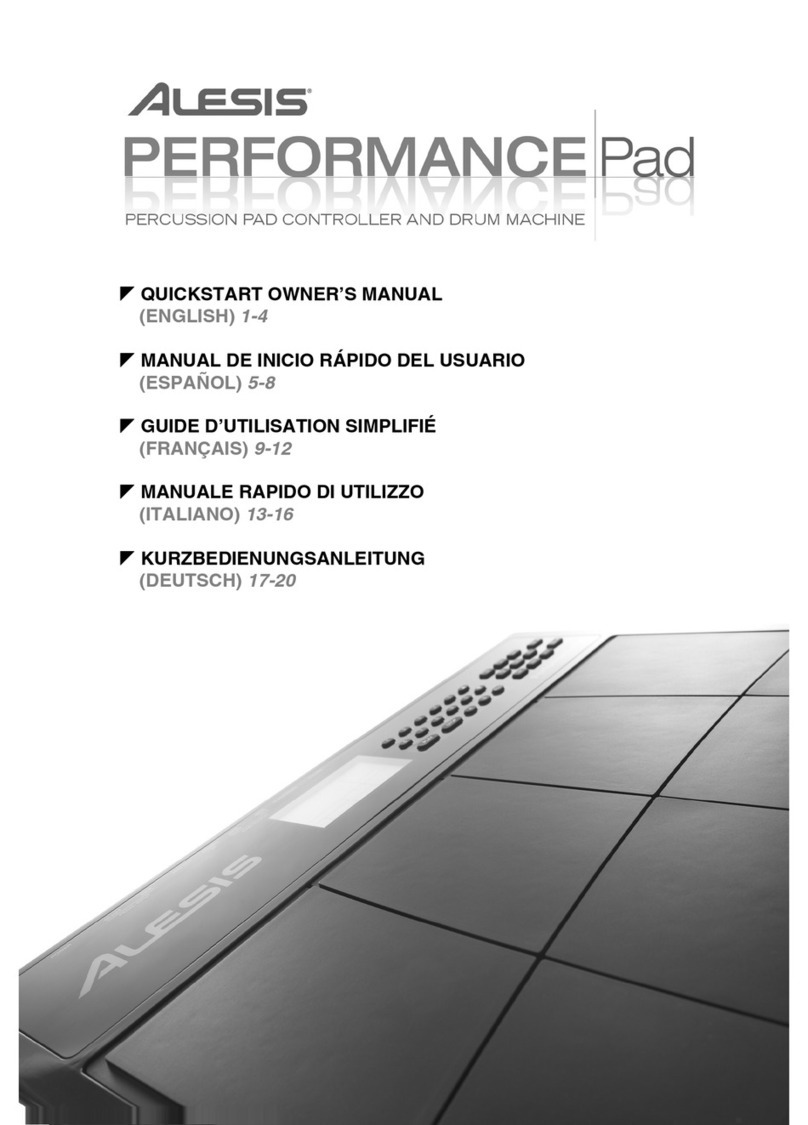
INSTRUCTIONS FOR MIDI INTERFACE ROLAND
TR-808 DRUM MACHINE
USING THE MIDI INTERFACE
Your TR-808 drum is now equipped to send and receive MIDI information. When turned on the machine will
function normall , sending out and receiving MIDI note & velocit information on the channels set in memor . The
factor channel settings are: receive chan 10 omni off transmit chan 10 and Stop/start TX/RX enabled Clock
information is alwa s sent and Start/stop information is sent and received if enabled. (Not channel sensitive)
YOU CAN RETURN TO THE FACTORY MIDI SETTINGS BY SWITCHING THE MACHINE ON WHILST
HOLDING THE RED BUTTON PRESSED (hold for a couple of seconds)
With the rear panel switch set to normal (up) the TR-808 drum will run from its own internal clock and will send out
MIDI timing information at a rate determined b the tempo control. With the rear panel switch in the down position
however, it will run from MIDI s nc at the rate set b the MIDI device connected. If no MIDI timing information is
present then the TR-808 drum will not run.
Some drum machines/sequencers ma not send start/stop codes, in this case pressing the start switch on the TR-
808, will make it wait until MIDI clock/s nc is present.
You can make the TR-808 ignore start/stop codes b selecting it from the programming mode described in the next
paragraph, when set to disable the TR-808 will neither respond to, nor send start/stop codes - when enabled (the
default condition) start/stop codes will be both sent and received.
RED PUSH BUTTON
Two modes are available b pushing the red push button. Before ou do press the red button however, make sure
the TR-808 drum is not pla ing, otherwise the results ma be unpredictable.
1) SET-UP MODE - Setting MIDI channels and assignments (start-stop etc)
Give the red push button a short press (half a second) - then release. Follow this with a note or sequence of notes
(on the remote ke board) as detailed on page 2. After selecting a channel ou will be automaticall returned to
pla ing mode but after making assignments ou will need to press the ENTER ke (Top C) to return to pla ing
mode. (N.B. set-ups are stored in non volatile memor ).
2) MAPPING MODE - assigning MIDI notes to sounds
Press the red button hold for about six seconds - then release. Follow this (on the remote ke board) with a program
change number, then an MIDI note. The drum sound specified b that program change number will be mapped to
the ke ou pressed. You ma keep assigning drum sounds to ke s in the same fashion (program then ke ). When
ou have assigned all the sounds that ou want to, press an invalid program change number (12 and above), ou
will then be automaticall returned to normal pla mode. On page 3 is a list of which program numbers correspond
to what drum sounds.
N.B. The red button can be "pressed via MIDI - see last page.

